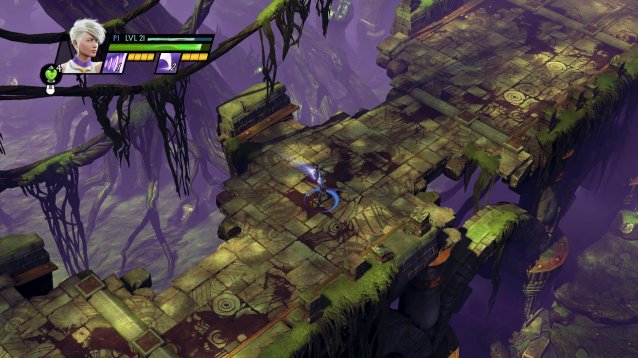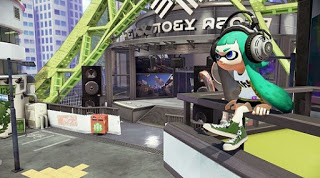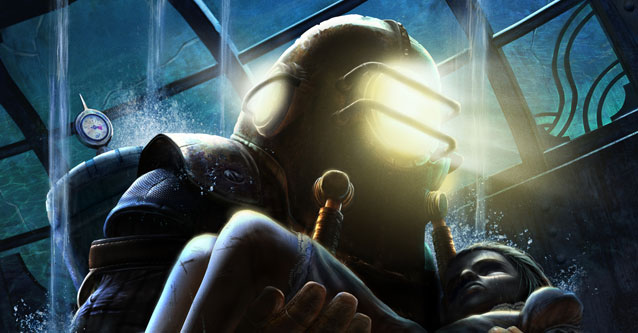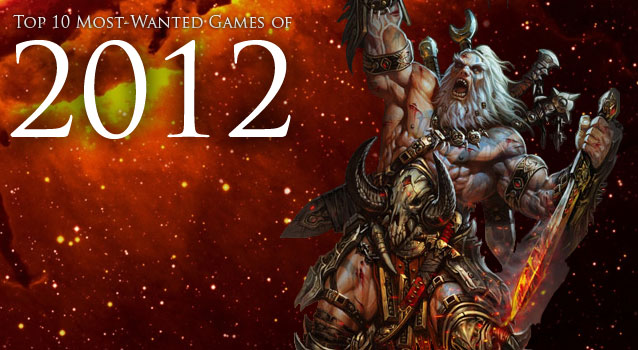


The Sacred series has been around for a while and has undergone significant changes in that time. Changing development studios has added to these changes, and being a newcomer to Sacred left me completely unsure as to what to expect.
Set in the land of Ancaria, Sacred 3 is a 3D hack’n’slash ARPG which has a steep initial learning curve that levels out very quickly into a fairly shallow game. Story-wise, there’s nothing in Sacred 3 that is new or even particularly interesting. The lasting impression is of a story that serves as nothing more than a basic excuse for the gameplay, and that impression isn’t helped by the odd sense of humour that the game seems to have.
Focusing around a rebellion to free Ancaria from the tyrannical grip of a Sauron-esque Dark Elf named Zane, the story is a very basic tale of a small group of heroes with inexplicably god-like powers achieving what the armies of multiple, once powerful, nations could not.
Sacred 3 forgoes any sense of tension in favour of a lackadaisical series of jokes that are as out of place as the most vocal NPC’s accent, which may as well have come straight out of an American teen comedy-drama. The games’ jokes are not unfunny so much as they are recycled. The few quips that do manage to be genuinely funny mostly come from rarely seen or heard NPCs – the weapon spirits, but more on them later.
I have two issues with Sacred 3’s humour; the first is the Khukuri playable character. Vajra is a braggart and also a mix of East Asian stereotypes. This Mongolian-Chinese-Tibetan warrior has a fondness of making up ridiculous proverbs and contributes nothing of any value to the story or the dialogue. To the best of my memory, all of Vajra’s lines in the main story cutscenes begin along the lines of “There’s a saying among my people”. I found the character immature more than anything, however some players may take greater umbrage with him.

My second issue with Sacred 3’s humour (and general character design) is based around its lazy, fan-service-y representation of quite literally every single female character in the game. Boob armour abounds, stereotypes run as rampant as the average teenagers’ hormones, and as the female characters level up their armour they actually end up wearing less. I am not someone who believes women should be covered up and ‘dressed modestly’, however Sacred 3’s representation of women is not a rallying call of physical and sexual liberation, it’s mostly masturbation material for teenage boys. This is rather disappointing as Sacred 3 would otherwise be fairly strong in the representation and diversity category.
The world map for Sacred 3 is basically a fancy level selection menu. There’s a linear, if meandering, path upon which are placed a few dozen nodes. Each of these nodes is a level, some being central to the story and others being short side areas. Every level in the game is a big path that’s strewn with enemies and leads to some sort of big boss confrontation at the end. Sometimes the bosses are large trolls – the type that wield giant clubs and destroy villages, rather than naughty children with access to the internet - and sometimes they’re arcane doomsday machines –which feature no giant clubs, but still manage to destroy villages. This structure is repeated through the whole game and becomes dull by the end. I wish, just once, that there had been some kind of twist or unusual feature to the levels, but it was not to be.
The main story levels usually don’t take much longer than half an hour and the smaller nodes - which may be either arenas that spawn five waves or very short paths with a mini-boss waiting at the end - can often be finished in less than five minutes. The side areas provide an unusually large amount of experience and gold, considering how short they are, which is handy for grinding experience to meet the requirement for unlocking the final level – the only level in the game that you will not otherwise naturally gain the experience required to unlock during normal progression.
The side nodes also happen to grant large amounts of gold, but this doesn’t really matter as the main missions are so generous with their rewards that you should never be strapped for cash to buy that latest upgrade. There are consumables in the game, but again, these are limited in application and largely irrelevant in practical terms. The only consumable that matters are the health potions which double as extra lives should you find yourself tragically departed in a furious battle. There was not a single instance in the game where I felt the need to use the health regeneration totem, the shield aura, the energy potion, the smart bomb (just a normal bomb), or the magic sentry (summons a turret that attacks enemies for a short duration). This owes to the fact that Sacred 3 is too easy, even on the Deity difficulty which is only unlocked on completing the game at least once. There’s no pressure on the player to fight creatively. Of my five deaths during my first playthrough, one came from being overwhelmed in combat (on the boss of the third level) and the other four came from floor traps and one particular boss which can kill you in a single hit. One legitimate death and four cheesy deaths don’t suggest a great deal of difficulty.

Mechanically, Sacred 3 scores significantly better than its story, although the RPG aspects are almost as lacking as the story. The reaction based combat is refined and slick with easy to chain combos and a good range of options available to the player when it comes to fine tuning the nuances of their heroes’ combat styles. The combat may be fast, but the skill ceiling is pretty low so mastery of the mechanics arrives quickly.
Each character has eight spells, called combat arts, – four light spells, three heavy spells, and a co-op spell which can only be used on another player – which will usually feature area of effect damage, may knock their enemies to the ground or inflict other debuffs, and which can be upgraded as the player levels up. Some upgrades are largely meaningless, and some make certain spells far too strong. An example of the latter would be an upgrade to the Seraphim’s Holy Word spell which gives it a high chance to knock enemies over and make them vulnerable to an execution move. When spammed, this spell renders most non-boss enemies irrelevant as those that survive the damage of the spell can be disposed of by quickly tapping the execution key. Executions also refill the energy bars which allow spells to be used, thus allowing Holy Word to be spammed almost indefinitely.
Executions are short finishing moves and can be initiated on enemies from a long range and entail the player character leaping across the screen to slam down onto the unfortunate enemy. Imagine Mario stomping Goombas but with added bass. It’s quite relaxing. Executions also have the benefit of giving more points per enemy than would otherwise be possible to achieve. So if mastering the scorecard aspect of Sacred 3’s level progression is something you wish to do, this is the way to do it.
In addition to their combat arts, each hero will also gain access to three weapons which they may improve as they level up. Some upgrades come from amassing a certain amount of experience and some are unlocked through story progression. The weapons’ upgrades do add some nuance to character builds as they can be fine-tuned for raw damage output, increased resource generation – mostly just increasing the chance for enemies to drop energy or health orbs – or an increased area of effect for normal attacks.

As the story progresses, the player will also gain access to weapon spirits. Essentially, these spirits are used to upgrade weapons, each granting both a powerful buff and an equally powerful debuff to the player. One example is the Vampire, who grants your attacks a life leech effect while reducing the amount of health you regain from collecting health orbs. Weapon spirits, like everything else, can be upgraded as the player gains experience or makes progress through the story. Unlike everything else, however, there’s no choice as to how the weapon spirits level up. They gain shards, an analogue for experience levels in this case, which just increase the strength of their buff or reduce the potency of their debuff. These are flat upgrades and do nothing to address the over-powered nature of two of the weapon spirits in comparison with the others.
While variety of skills, skill upgrades, weapons, and weapon spirits may seem to give Sacred 3 some depth, it quickly becomes apparent that none of these differences really change the dynamic of the heroes in a meaningful way. To worsen this, some upgrades are quite obviously better than others in the same way that Holy Word is significantly better than any other spell in the game. The Vampire and Battlemage weapon spirits are simply the best, respectively allowing for nearly unlimited sustainability or such an absurd damage output that there’s no way anything short of a boss should ever harm you. Their debuffs – respectively: reduced health orb efficiency and reduced energy orb efficiency - don’t come close to balancing out their power.
The shining features of Sacred 3 are its aesthetics and its audio. This is a game that looks great and sounds even better. Wonderful lighting effects glisten on environments that are highly varied with a large amount of detail present in every area, and combat is dripping with visual style. The score and sound effects give many levels a rich atmosphere that is completely at odds with the story’s lack thereof. Combat sounds wonderful; every attack and spell rings, thuds, crashes, or wallops into enemies giving a real sense of impact to the abundance of particle effects that accompany such strikes.
The details in the environments even manage to contain jokes which are actually funny. All of this is even more impressive given how well Sacred 3 runs. Even during the busiest melees, I never noticed the framerate drop below 110 frames per second and the game usually ran at a buttery smooth 120 frames per second. Framerates aside, Sacred 3 does have some annoying bugs. I experienced multiple crashes to Windows with no identifiable cause, the resolution occasionally defaults to 640x480 for some reason, some loot drops won’t be picked up when the player walks over them, and ALT+Tabbing the game causes it to go into windowed mode instead of actually minimising the game. The bugs could be worse, but then again they could also not exist.
If the sort of effort that went into the visual and audio design of Sacred 3, went into the story and the characters, this is a game that could have been a game of the year contender. Unfortunately, these two areas were not enough to save Sacred 3 from mediocrity.
5 out of 10
Sacred 3 was developed by Keen Games and published by Deep Silver. It will be released on August 5th, 2014, and is available on PC and Mac for $49.99. A PC version of the game was provided by the publisher for this review.



